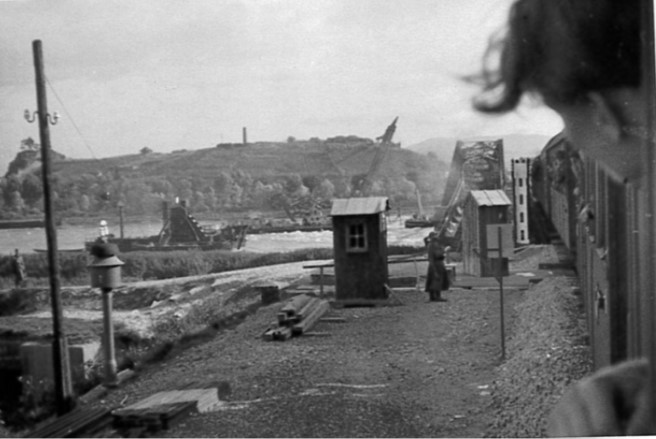23.03.2020
THE RHINE BRIDGE IN BREISACH
Historical researchers agree regarding the route from Mulhouse, which became a collection point.
All nine trains – two on the left bank of the Rhine with Saar-Palatinate Jews and seven on the right bank with Jews from Baden – traveled from Mulhouse through Dijon to the border at Châlon-sur-Saône, on the demarcation line between occupied Alsace and the “Zone Libre” (the free zone), in which the collaborationist Vichy regime had proclaimed the “French state.” The route ran through Lyon, Nîmes, Narbonne, Toulouse and Pau, ending in Oloron-Sainte-Marie. From there the deportees were taken to the Gurs camp in trucks.
Memorial sites and various authors come to different conclusions about which Rhine bridges the trains used to enter the annexed Alsace region.
Three Rhine bridges come into consideration: the bridge between Kehl and Strasbourg, the one between Breisach and Colmar, and the one between Neuenburg and Chalampé.
Since no transport documents have yet been found, the authors rely on eye-witness reports by deportees and an analysis of the condition of the Rhine bridges in October 1940.
Eleven deportees reported that they traveled in a westerly direction from Freiburg and crossed the bridge at Breisach. Interestingly, two very young deportees, Rolf Weinstock from Emmendingen and Manfred Wildmann from Phillipsburg, mention a detail that undoubtedly points to the bridge at Breisach, which had been destroyed in 1939 and repaired in 1940.
Manfred Wildmann died in 2020 in California, age 89; it was only in December 2019 that his family confirmed this report (Mr. Wildmann’s poor health prevented an interview from being conducted with him).
A chart listing the destruction of the Upper Rhine bridges and their restoration in 1940–1941 shows that, at the time of the deportation on October 22–23, 1940, only the Breisach bridge over the Rhine had been restored for train traffic. Numerous photographs in the city archives of Breisach am Rhein provide impressive evidence of this situation; the reopening on July 25, 1940, was celebrated by the Nazis.
The city archives of Kehl and Neuenburg have confirmed this finding.
You can download the article here:
DOWNLOAD

Der Vortrag von Dr. Bernd Hainmüller “Der letzte Blick auf die Heimat” (22.10.2020) wurde in der Corona-Pandemie aufgenommen und steht hier wie auf dem YouTube Kanal Blaues Haus zur Verfügung.